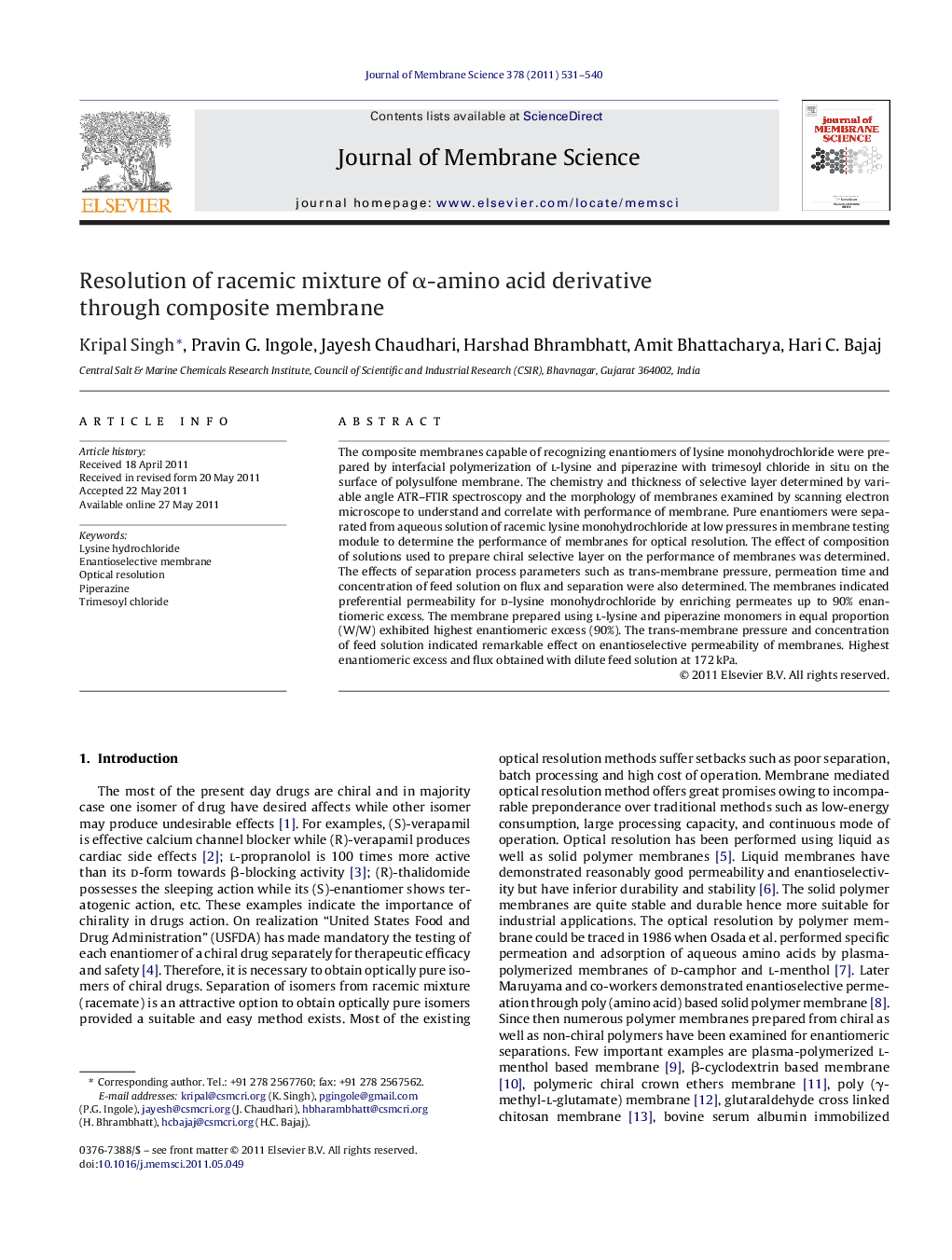| کد مقاله | کد نشریه | سال انتشار | مقاله انگلیسی | نسخه تمام متن |
|---|---|---|---|---|
| 635633 | 1456101 | 2011 | 10 صفحه PDF | دانلود رایگان |

The composite membranes capable of recognizing enantiomers of lysine monohydrochloride were prepared by interfacial polymerization of l-lysine and piperazine with trimesoyl chloride in situ on the surface of polysulfone membrane. The chemistry and thickness of selective layer determined by variable angle ATR–FTIR spectroscopy and the morphology of membranes examined by scanning electron microscope to understand and correlate with performance of membrane. Pure enantiomers were separated from aqueous solution of racemic lysine monohydrochloride at low pressures in membrane testing module to determine the performance of membranes for optical resolution. The effect of composition of solutions used to prepare chiral selective layer on the performance of membranes was determined. The effects of separation process parameters such as trans-membrane pressure, permeation time and concentration of feed solution on flux and separation were also determined. The membranes indicated preferential permeability for d-lysine monohydrochloride by enriching permeates up to 90% enantiomeric excess. The membrane prepared using l-lysine and piperazine monomers in equal proportion (W/W) exhibited highest enantiomeric excess (90%). The trans-membrane pressure and concentration of feed solution indicated remarkable effect on enantioselective permeability of membranes. Highest enantiomeric excess and flux obtained with dilute feed solution at 172 kPa.
► The composite membranes were prepared by interfacial polymerization technique using l-lysine, piperazine and trimesoyl chloride monomers.
► These membranes are mechanically stable and can be used in pressure driven separation mode.
► The membranes can resolve racemic mixture of amino acid derivative successfully and efficiently.
► These membranes are useful for enantiomeric separation of amino acids.
Journal: Journal of Membrane Science - Volume 378, Issues 1–2, 15 August 2011, Pages 531–540